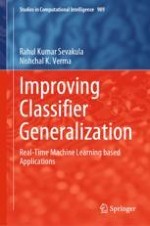2023 | OriginalPaper | Buchkapitel
6. Stacked Denoising Sparse Autoencoder-Based Fuzzy Rule Classifiers
verfasst von : Rahul Kumar Sevakula, Nishchal K. Verma
Erschienen in: Improving Classifier Generalization
Verlag: Springer Nature Singapore
Aktivieren Sie unsere intelligente Suche, um passende Fachinhalte oder Patente zu finden.
Wählen Sie Textabschnitte aus um mit Künstlicher Intelligenz passenden Patente zu finden. powered by
Markieren Sie Textabschnitte, um KI-gestützt weitere passende Inhalte zu finden. powered by
